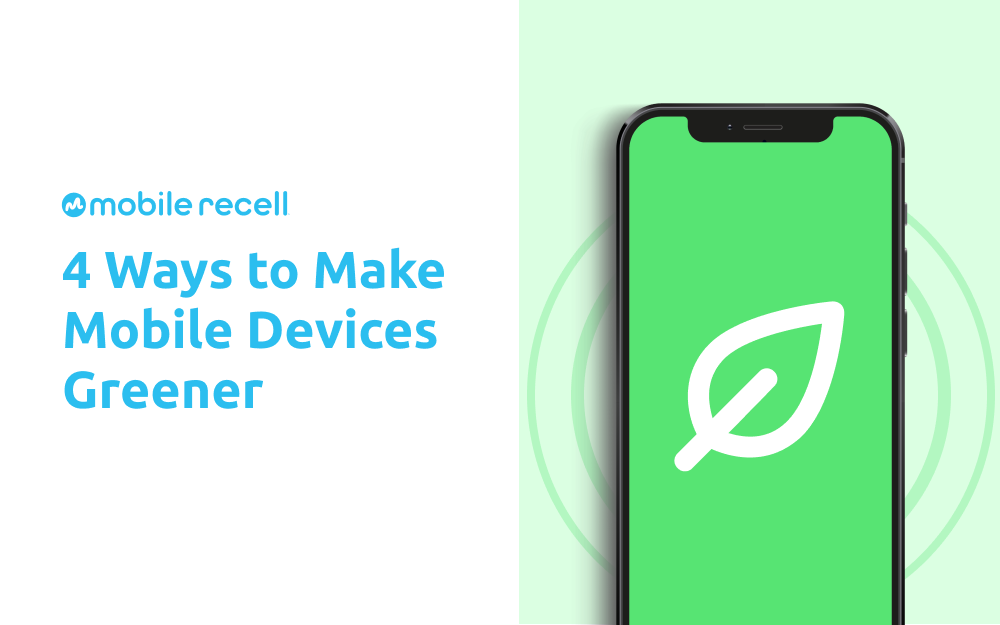Although we love our electronics—smartphones, tablets, smart TVs, laptops—the environment is paying the price of our beloved gadgets, as landfills are becoming overrun with e-waste and hazardous substances.
The e-waste crisis and the current state of our landfills is why enterprises must take the initiative to be more environmentally conscious of the products they manufacture and/or use.
In this article, we will discuss how changes in supply chain, product design, device repairs, and software support can make mobile devices greener.
Supply Chain
The main reason electronics aren’t environmentally friendly is the lack of transparency in the supply chain. 80% of organizations don’t know where their raw materials come from or if they’re regulated. When device manufacturers use unregulated or raw materials, there is a risk of depleting our natural resources.
Device manufacturers can use recycled plastic—and recycled materials in general—to assemble devices. Some original equipment manufacturers (OEMs) like Apple have already adopted this practice, using up to 35% of recycled plastic in twelve components of the iPhone 13.
Product Design
Most smartphones have a sleek design and are fairly lightweight. Device manufacturers achieve this by gluing internal components together. Glue makes it challenging to repair a device, which shortens the device lifecycle and lowers the possibility of device reuse.
A green alternative to using glue to hold parts together would be using screws or stretch-release adhesives. The most ideal alternative would be to use a stretch-release adhesive, given that screws make mobile devices heavier, and consumers prefer lightweight devices produced as smartphone designs have evolved through the years.
The strength of stretch-release adhesives is similar to Command Strips. They have a firm grip but come equipped with built-in pull tabs; when pulled by their tabs, the adhesives lose their stickiness.
Repairs & Upgrade Processes
Mobile devices have struggled with durability over the years, resulting in frequent repairs for damages like broken screens, busted speakers, or shattered cameras.
Additionally, some devices are difficult to repair. Take replacing a battery, for example; if a manufacturer utilizes a specific process for the battery component only they are knowledgeable of, company IT teams and consumers can’t easily replace the battery. Therefore, a battery replacement requires a special technician, which can be costly.
If there isn’t a simple or cost-efficient solution, both businesses and consumers can render the device unrepairable, and it will likely end up in a scrap pile. This scenario can lead to an unplanned replacement or device upgrade, significantly reducing a device’s lifecycle.
Mobile devices can be easier to repair by utilizing modular components. When devices are built with modular components, parts can be easily accessed, removed, replaced, or upgraded without affecting other features. Modular mobile devices tend to last longer and have more functionality than traditional smartphones.
Software Support
Older devices tend to stop receiving software updates after a certain period of time. Once an older model IT asset no longer receives software and security updates from the manufacturer, the valuable corporate data on that asset becomes vulnerable and exposed.
As of 2022, operating system support for older devices tend to vary between three to five years, but with recent competitive pressures, it is expected that five years will be the new average length of support for most devices. This transition in operating system support will be extremely beneficial, as it extends the lifecycle of devices and allows consumers to get the most value out of their devices before upgrading to a newer one.
How Mobile reCell Maximizes the Residual Value of Mobile Devices
The secondary market is growing. Longer-lasting phones tend to retain a significant portion of their value for resale, and enterprises can get more money back for devices once they are pulled out of service.
Our fair market value data allows you to determine the resale value of depreciating IT assets based on the assets’ model, condition, and grade. Using these tools, you can estimate the value of your idle assets sitting in a drawer or IT closet and the value of devices you will soon remove from service.
Knowing your IT assets’ worth can help your organization maximize return and further additional IT projects by converting idle inventory and retiring devices into usable capital.
Additionally, Mobile reCell assists in reselling IT assets through our established marketplace of ready-to-purchase buyers, where we help identify the best fit based on asset type, grade, and volume.
We know our buyers and the assets they’re looking to purchase. Our marketplace allows us to reach out to the best buyers for your recovered IT assets and receive the maximum dollar amount for you.
Chat with us to learn how your enterprise can take environmental initiatives with your mobile devices through IT asset recovery.
Follow us on social media!
See Mobile reCell’s Recovery Platform in action.

